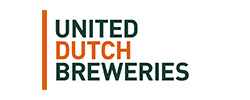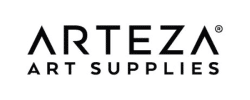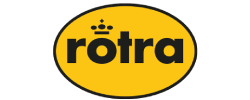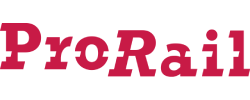Let your employees thrive through diversity and inclusion

By Robin van der Meulen | 05/07/2021
In the workplace, nothing is more important than that employees can be themselves. Imagine walking on eggshells for more than 30 hours a week, not feeling comfortable, no one around you to have a genuine conversation with... That can make anyone gloomy or stressed! That is why 'Diversity and inclusion' are also one of the drivers of the 2DAYSMOOD Employee Happiness Model. It is one of the 15 measurable factors that influences happiness and employee engagement, and therefore the success of your organization.
How do you create an emotionally safe work environment?
Diversity and inclusion are about the importance of creating an emotionally safe working environment, in which employees can and dare to show their real personality, talents, motivations and insecurities. With the term 'diversity and inclusion' you can think of, for example, social values, a sense of freedom of expression, equality, respect and honesty.
In collaboration with expert Hans van Gastel, I, Robin van der Meulen, Strategic Happiness Expert at 2DAYSMOOD, brought our customers together to consider the question:
"How do I create an emotionally safe environment for employees as a director, HR professional or team leader?"
Hans is a coach and connector, and has been working on sustainable employee happiness, growth and personal leadership for years. He believes that people achieve the best results based on trust, connection and leadership. In this blog we will answer the question above from our own specialisms and experiences.
Hans: "Before you can answer this question, it is important to take a critical look at what is already happening in the workplace in the field of diversity and inclusion. And especially at what is not happening (yet)."
For example, answer the following questions for yourself:
- Are diversity and inclusion high on my company's agenda?
- Can I see added value in a safe working environment?
- Do I know how to create an emotionally safe environment?
- Do I always feel safe at work?
- To what extent is there complete openness in my team?
- Is everyone always welcome with us? Whether one is male or female (or falls anywhere else on the spectrum), whether one believes in something or believes in nothing, whether one is a refugee or not?
- Do men and women earn equally with us? Do we treat all genders in the same way?
"In order for people to flourish and develop themselves, a secure base is necessary."
The importance of openness
Why is all this so important, a safe, open and equal working environment? Why is it so important that employees can show themselves when they are at work?
Hans: "The importance of this can be deduced from the pyramid of Maslow (1943). In his pyramid Maslow already showed that the basic need for safety must be satisfied before reaching self-development. In other words: to allow people to flourish and to develop themselves, a safe basis is necessary. This applies to life in general, but also certainly in the workplace. To ensure that employees feel comfortable at work, it is important that they feel comfortable with themselves. The more open colleagues are allowed to be with each other in this regard, the more success they will achieve together."
Diversity and inclusion as a driver of employee happiness
Robin: "Although the importance of safety was considered obvious years ago, we notice with 2DAYSMOOD's customers that social safety is and remains an important theme for employees in the workplace. It makes sense, times change and equality between men and women has perhaps improved… But now more than ever we have to deal with different cultures, religions, or gender diversity, not to mention the aging population, which can lead to age discrimination."
Fortunately, in these modern times we also have the opportunity to research drivers such as diversity and inclusion smartly and quickly. Through our measurement method, which is linked to the Employee Happiness Model, employers can measure the extent to which their employees feel that they can express their true self at work.
A high impact
Thousands of employees within dozens of different organizations were asked how satisfied they are with the current situation (if they can be themselves). In addition, it was surveyed how important they consider diversity and inclusion for their job satisfaction. On average, the employees gave a satisfaction score of 4 (out of 5). This is a pretty good score. And it should be, because the impact of this score appears to be high. For the statement 'respectful and equal treatment is important for my job satisfaction', employees gave an average importance score of 4.5 (out of 5).
Despite the fact that employees of these 2DAYSMOOD customers can already show their true self at work, the current situation is not yet equal to the desired situation. As an employer, HR professional or team leader, this is a sign to (continue to) take respectful and equal treatment seriously. So keep asking: what would have to happen to make this 4 a 4,5 or 5?
"Only if you provide openness in the basics, value will eventually be created."
The importance of leadership
If you as an organization do not communicate openly about certain expectations, norms and values, you will also not create an open environment for your employees.
Hans: "Only if you ensure openness to current and potential employees in the basics, value will eventually be created."
Beliefs, characteristics, motivations, norms and values that underlie behavior within your organization only become visible if you communicate them openly (McClelland). For example, communicating clear business ethics and guidelines for how you interact can go a long way in creating and maintaining an open and socially safe work environment.
Hans: "Leadership is of great importance in this. Movement must arise from above in order to break certain ingrained behavioral patterns."
How do you recognize socially unsafe situations?
In organisations, socially unsafe patterns of behavior and situations come in all shapes and sizes. Often it is only short moments that pass unnoticed. If they are noticed, then the moment to say something about them is often already over. Moreover, employees are inclined to flee or to close themselves off in socially unsafe situations, for fear of not belonging to the group anymore if they share a different opinion. Some examples and signals of socially unsafe situations are:
- An employee who is presented without context as a know-it-all in a meeting with colleagues.
- A manager who trivializes that things are not so bad when an employee shares that she is being harassed by a colleague.
- Someone who always sits alone during the break.
- Sexually tinted comments about women in a setting with and without women.
- A manager who complains, without taking ownership of the subject himself.
- Colleagues who are digitally belittled, because no one responds to his/her question.
It can be quite difficult to notice such situations on the spot and intervene immediately.
Hans: "If you don't do anything as an organization at moments like these, it will eventually result in the loss of employees. By directly engaging in open dialogue, you can reduce certain tensions and restore safety."
7 tips to create diversity and inclusion in your organization
As a board, HR professional or team leader, there are a number of things you can do according to Hans to create a socially safe working environment for your employees.
- It begins with leadership embracing and discussing diversity and inclusion. Put diversity and inclusion (high) on the agenda and create insight into how things work within the organization.
- Set a good example yourself and be vulnerable. How open and approachable do you show yourself?
- Don't give up on insights. Convert insights into an active policy to safeguard your diversity and inclusion in the organisation.
- Be transparent on the subject. Do not avoid conflict, but mediate impartially. Be a mirror for your co-workers and ask questions of conscience such as 'how would you like to be treated?'
- Always follow your intuition. Does something not feel right? Do you keep rewinding a certain situation in your mind? Do not ignore this and raise it with the people in the relevant situation.
- Every organization has people who have a great sense of integrity and fairness. The question is: do you know them and how well do you really listen to these people?
- Continue to solicit and monitor feedback. What is happening in your company? Talk about this. Consciously look for difficult-to-discuss topics and put them on the table.
Hans: "Finally, as an employee (at any position in the organization) you can also contribute to a safe organization yourself. The more open you are, the more open your colleagues will be. You always have influence on what happens because you are always there yourself, so bring in your own social norms and values!"
Improve diversity and inclusion in your team with this exercise!
The organizational psychologists in the 2DAYSMOOD team are busy every day collecting scientific knowledge that can also be applied effectively in teams. We share the knowledge, tips and exercises that we compile through our online E-learning platform (only for customers). But because we want everyone to have a diverse and inclusive team, we are happy to share the valuable exercise below with you.
Team exercise: determine what you mean by 'respect'.
Get together as co-workers or team and individually consider the following questions to determine what each team member considers respectful, acceptable behavior for the workplace. Use your sensory experiences to make your answers concrete!
- What does respect look like to you?
- How does respect feel to you?
- What does respect sound like to you?
There are no wrong answers here, but if your team is struggling with these questions, use these examples to guide them:
- Respect looks like… coming to work neatly dressed
- I feel respect when… you can come to the office at ease and carefree
- To me, respect sounds like… listening to everyone's opinion without a direct response
- … you can probably think of a lot more now!
Once each team member has answered these questions for themselves, you come together as a group and everyone shares their answers. Encourage team members to share the stories behind their answers. How different are team members' experiences and why? Now try to find the shared values in those experiences and answers together.
As a team, compile a list of the answers that everyone finds desirable, respectful and acceptable. Formulate this in clear forms of behaviour, expectations or rules. Such as: 'when entering the office we say hello', 'everyone cleans up the mess' or 'we laugh with each other, not at each other'.
Hang this list somewhere visible in the office environment (and make work of it creatively!).
Do you want to know how your organization is dealing with diversity and inclusion? With the simple, fast and fun measuring method of 2DAYSMOOD you quickly have relevant insights. Try it now!










Happy employees make happy customers
These (HR) managers use 2DAYSMOOD and make real impact!
How? Our measuring method is the renewed employee survey, because it’s faster, easier and science based. A continuous source of data with which you can improve your (team) culture step-by-step and increase employee happiness. In short, that is profitable for your organization!

Jan-Herman Hanskamp

Emma Sluman

Rita Blankenberg

Robin Gerritsen
Leading Organizations Work with 2DAYSMOOD













Get in touch for free advice, a demo or quick scan!
Always the employee survey that suits you.
Do you want to increase happiness in your teams? Collect feedback on a specific subject? Monitor stress in real-time? Or do you need a baseline survey to get insight in the drivers of your culture?
We are happy to help with your specific challenge, using:
- Our expertise, experience and energy!
- A demo of our tool (if you like)
- The opportunity to try it for free
- Or enjoy reading our brochure
